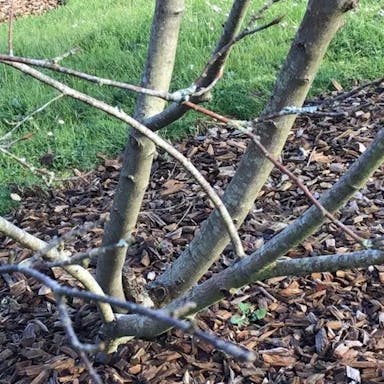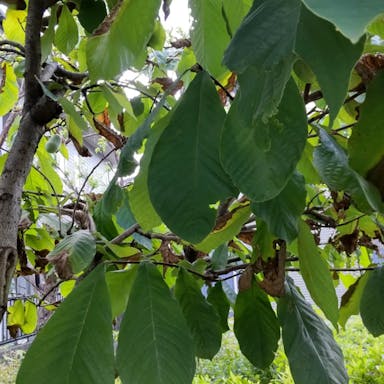Quassia amara, commonly known as Quassia, is a small tree native to the tropical regions of South America and the Caribbean. It belongs to the Simaroubaceae family and is renowned for its bitter taste due to the presence of quassinoids. The tree produces small clusters of greenish-white flowers with a unique fragrance. The flowers are followed by small, capsule-like fruits containing seeds. Quassia amara is primarily used for its medicinal properties, particularly as a natural insecticide and in traditional medicine for various ailments. It is also utilized in the production of herbal remedies and beverages. The tree typically grows up to 15 meters in height and thrives in moist, well-drained soil. Quassia amara is relatively easy to grow in tropical climates, making it a popular choice for both ornamental and medicinal purposes. Its bitter taste serves as a natural defense mechanism against herbivores.
Quassia
- Scientific name
- Quassia amara
Basic Information
- Simaroubaceae Family Quassia Genus Quassia Species
- Simaroubaceae > Quassia > Quassia amara
- 83%
- The Completeness of This Encyclopedia
Please help us complete the encyclopedia, Terrarium is a encyclopedia service to be completed with everyone in the world. Currently, this page is 83% complete. For more information on how to contribute, please click here.
- Small tree
- Tree
- Height
- 600cm ~
- Flower Color
- Leaf Color
- Anthesis
- spring
- Sunlight Exposure
Full Sun Long hours of sunlight from morning to afternoon Partial Shade A location in the shade of a tree or where either the morning or afternoon is shaded Full Shade A place where there is no direct sunlight
- Full Sun
- Hardiness Zones
This is an indicator to know to which zone each plant can winter. Knowing the zone of each plant gives you an idea of the cold temperature resistance when grown in the ground without a roof. 2: -42.7 to -40.0 3: -39.9 to -34.4 4: -34.3 to -28.9 5: -28.8 to -23.3 6: -23.2 to -17.8 7: -17.7 to -12.2 8: -12.1 to -6.7 9: -6.6 to -1.1 10: -1.0 to 4.4 11: 4.5 to 10.0
- 10
- Cold resistance
- Poor
- Heat resistance
- Excellent
- Habitat of origin
- Brazil
- Growth Rate
- Normal
What is Quassia (Quassia amara)?
What is Quassia (Quassia amara)
Flower meaning
The flower language commonly used in America for Quassia is: - Bitterness - Resilience - Protection One typical example is "Bitterness," symbolizing the plant's bitter taste and its ability to protect itself from predators. Birth flowers are specified by month and date only.
Calendar of Quassia (Quassia amara)
Calendar
Quassia in the United States typically blooms in late spring to early summer. The flowers of Quassia are at their best during the month of June. Blooming occurs once a year, usually lasting for about 2-3 weeks. To extend the blooming period, ensure the plant receives adequate sunlight, water, and nutrients. Pruning faded flowers can also promote new blooms.
How to grow Quassia (Quassia amara)
Watering
For Quassia plants, watering frequency should be moderate, typically once every 7-10 days, depending on environmental conditions. During the growing season, ensure the soil is consistently moist but not waterlogged, allowing the top 1-2 inches of soil to dry out between waterings. In winter, reduce watering to prevent root rot, watering only when the topsoil feels dry to the touch. Avoid overwatering as it can lead to root rot and other issues. Adjust watering based on humidity levels and temperature changes to maintain optimal soil moisture.
Soil and Fertilizer
Quassia thrives in well-draining soil with a pH level between 5.5 and 6.5. It prefers loamy soil rich in organic matter. Fertilize Quassia with a balanced fertilizer, such as a 10-10-10 NPK formula, in early spring before new growth begins. Apply fertilizer again in mid-summer to support flowering and fruiting. Use a water-soluble fertilizer diluted to half strength. Avoid over-fertilizing, as it can lead to nutrient imbalances. Monitor the plant's growth and adjust fertilization accordingly. Regularly check the soil moisture and pH levels to ensure optimal conditions for Quassia.
Sunlight and Place
Quassia thrives in full sun to partial shade, requiring at least 6 hours of direct sunlight daily. It exhibits moderate cold tolerance, able to withstand temperatures as low as 50°F (10°C). In terms of heat tolerance, Quassia prefers warm temperatures between 65-85°F (18-29°C). During winter, it should be protected from frost and cold drafts. To overwinter, maintain a consistent temperature above 50°F (10°C). Place Quassia in a location with good air circulation and well-draining soil. It can withstand strong sunlight but may benefit from some shade during the hottest part of the day. Aim for an optimum of 8-10 hours of sunlight per day for optimal growth.
Advanced Information of Quassia (Quassia amara)
Pruning
Quassia should be pruned to maintain its shape, promote new growth, and remove dead or diseased branches. Pruning is essential to enhance the plant's overall health and appearance. The best time to prune Quassia is in late winter or early spring before new growth begins. When pruning, use clean, sharp tools to make precise cuts at a 45-degree angle just above a bud or lateral branch. Remove any crossing or crowded branches to improve air circulation. After pruning, water the plant thoroughly and apply a balanced fertilizer to support recovery and new growth. Regular pruning will help Quassia thrive and remain vigorous.
Planting and Harvest
Quassia is best potted in well-draining soil to prevent waterlogging, which can lead to root rot. Ensure the pot has drainage holes to allow excess water to escape, promoting healthy root growth. When planting, gently loosen the roots before placing them in the pot, covering them with soil and watering thoroughly. Repot every 2-3 years to refresh the soil and provide more space for growth. If the plant becomes root-bound, carefully remove it from the pot, trim the roots, and repot in a larger container. Monitor for pests like aphids and scale insects, treating them promptly to maintain plant health.
Propagation
Quassia can be propagated through seeds, cuttings, and division. Seeds should be sown in well-draining soil, kept moist, and placed in a warm, bright location. Cuttings can be taken from healthy stems, treated with rooting hormone, and planted in a soil mix suitable for rooting. Division involves separating the plant into sections with roots attached and replanting them in individual containers. To maximize propagation success, it is recommended to use a combination of methods. Harvest seeds when they are mature and dry, cuttings when they have developed roots, and divide the plant during the growing season.
Pests and Diseases
Quassia is susceptible to various pests and diseases, including aphids, spider mites, and powdery mildew. These pests can weaken the plant by sucking sap or causing fungal infections, leading to stunted growth and yellowing of leaves. Preventive measures include regular inspection of the plant for early detection of pests, maintaining proper air circulation, and avoiding over-fertilization. In the case of aphids, insecticidal soap or neem oil can be used to control infestations. Spider mites can be deterred by periodically spraying the plant with water to increase humidity. Powdery mildew, a fungal disease, thrives in humid conditions, so ensuring good air circulation and avoiding overhead watering can help prevent its spread. Withering of Quassia plants can be caused by a combination of these factors, leading to a decline in overall plant health.
Habitat of Quassia (Quassia amara)
Habitat
Toxicity of Quassia (Quassia amara)
Health Benefits
- edible
- Inedible
- Toxic
- toxic
NO DATA
Toxic for dogs and cats
NO DATA
Q&A of Quassia (Quassia amara)
- Is there a recommended way to choose Quassia?
Quassia varieties can be selected based on their intended use: Q1 for medicinal purposes due to its high content of Q2, Q3 for ornamental purposes with its vibrant Q4 flowers, and Q5 for insecticidal properties. When choosing Q1 seeds, look for plump, firm seeds without signs of mold. Q3 seedlings should have healthy green leaves and sturdy stems. Q5 seeds should be sourced from reputable suppliers to ensure effectiveness. Ensure proper research on each variety's specific requirements before purchasing.












